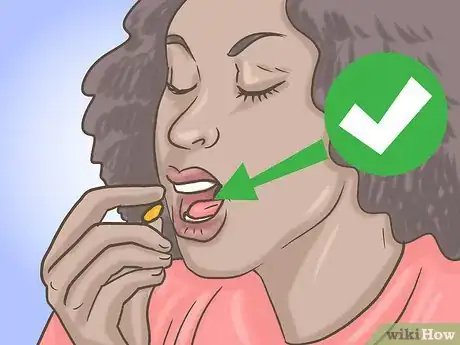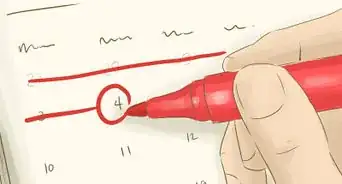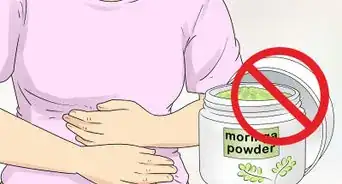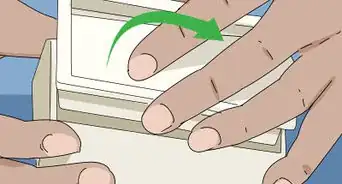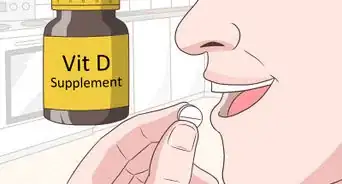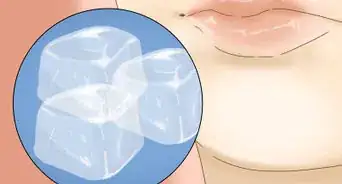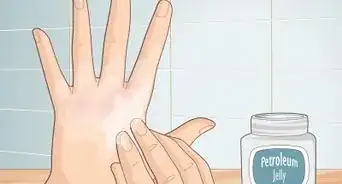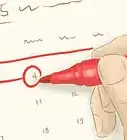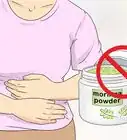This article was medically reviewed by Sarah Gehrke, RN, MS. Sarah Gehrke is a Registered Nurse and Licensed Massage Therapist in Texas. Sarah has over 10 years of experience teaching and practicing phlebotomy and intravenous (IV) therapy using physical, psychological, and emotional support. She received her Massage Therapist License from the Amarillo Massage Therapy Institute in 2008 and a M.S. in Nursing from the University of Phoenix in 2013.
There are 7 references cited in this article, which can be found at the bottom of the page.
This article has been viewed 121,999 times.
Softgels are fast-acting, liquid-filled capsules. They can come as a form of vitamins, supplements, over-the-counter medications, or prescription drugs. Softgels are a popular choice of medication mainly because they are easier to swallow than pills or capsules. When taking them, be sure to check your instructions and determine the correct dosage. Just take a swig of water, and you’ve swallowed your softgels!
Steps
Determining Dosage
-
1Read the instructions on your softgel package to find your dosage. Your dosage will be based on age and symptoms, and your package should detail this thoroughly. Every softgel will give different instructions based on the medication type.[1]
- A typical dosage could be to take 2 softgels with water every 4 hours for adults and children 12 years or over.
- Reviewing instructions is especially important if taking daytime or nighttime softgel products. You wouldn’t want to take a sleep aid right before you start your work day!
-
2Ask your doctor or pharmacist to clarify your dosage. Your prescription or over-the counter-package should list your dosage in the instructions. If it doesn’t or if you need clarification, you can ask either your doctor or pharmacist. They can clarify how much and how frequently you should take your softgels.[2]Advertisement
-
3Do not ingest more or less than directed. You cannot break up the dosage of softgels, for their contents are liquid, so never take more or less than listed. Taking more than directed can have many different health effects including overdose, depending on the medication. Taking less than directed prevents the medication from working.[3]
Swallowing the Softgel
-
1Take your softgels with or without food, based on your instructions. Most softgels are recommended to be taken with food, though it can get murky. If your instructions say to take with food, swallow your softgels with your meal or right after. If they do not, then you can take your softgels with water.[4]
-
2Take out the correct number of pills from your softgel container. Twist off or pop open the lid, and retrieve your softgels, usually about 1 or 2 at a time.
-
3Place your softgels in your mouth, on top of your tongue. Softgels are very easy to swallow and dissolve, though they come in a variety of sizes. You can take one at a time or your whole dose at once, depending on what’s comfortable for you.[5]
-
4Sip some water as you have the softgel in your mouth. You can also sip some water before you take your pill, in case your throat is dry.[6]
-
5Swallow both the pill and the water at the same time. The water will help the pill slide down your throat with ease.[7]
- Most softgel instructions say to drink water with your softgels to help with digestion. Unless your softgel instructions state otherwise, you can also take them with juice.
-
6Swallow your softgels whole. Instead of crushing, chewing, or dissolving your softgels, swallow them with their coating intact, unless your doctor or pharmacist tells you to take them differently. Softgels contain liquid, and their outer coating is designed to dissolve in your stomach or small intestine.[8]
- If you crush, chew, or dissolve a softgel that's meant to be time-released, it won't be absorbed into your system properly.
Warnings
- If you are taking softgels for medical purposes (rather than supplements), and your symptoms last more than 7 days, you should contact your doctor. You may need a stronger prescription or other medical treatment.[9]⧼thumbs_response⧽
- Liquid softgels have a shorter shelf life than most other pills or capsules, so check your softgels expiration date.⧼thumbs_response⧽
References
- ↑ https://www.betterhealth.vic.gov.au/health/servicesandsupport/safe-medication-use
- ↑ https://www.fda.gov/drugs/special-features/why-you-need-take-your-medications-prescribed-or-instructed
- ↑ https://www.betterhealth.vic.gov.au/health/servicesandsupport/safe-medication-use
- ↑ https://www.nhs.uk/common-health-questions/medicines/why-must-some-medicines-be-taken-with-or-after-food/
- ↑ https://www.health.harvard.edu/blog/two-tricks-make-easier-swallow-pills-201411137515
- ↑ https://www.health.harvard.edu/blog/two-tricks-make-easier-swallow-pills-201411137515
- ↑ https://kidshealth.org/en/parents/swallowing-pills.html
- ↑ https://www.pharmaceutical-technology.com/products/enteric-coated-softgels/
- ↑ https://www.drugs.com/otc/124972/daytime-cold-flu-relief.html
About This Article
Softgels are capsules filled with liquid medicine that are fast-acting and easier to swallow than other types of pills. To take them, first read the directions on the package to figure out the right dosage. Then, place the recommended amount of softgels on top of your tongue and take a sip of a liquid such as water or juice. Swallow both the pill and the liquid at the same time. Don’t bite, chew, or crush the capsule or it won’t be absorbed into your system properly. For tips from our Medical co-author on how to figure out the right dosage if you’re not sure, keep reading!





